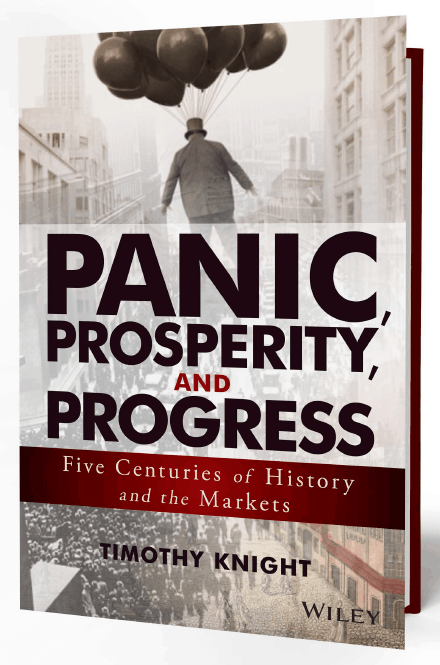I am going over the final edited version of my forthcoming book. I thought I’d share the Preface with you to give you a taste as to what it’s about:
As I suspect the case is with many others, my interest in history did not reveal itself until long after  my formal education was complete. A school’s offering of dates, places, and long-forgotten names captures the interest of very few children, and unfortunately it usually snuffs out any latent desire they might have to explore tales of the past that can offer up wisdom, insight, and previously unseen linkages.
my formal education was complete. A school’s offering of dates, places, and long-forgotten names captures the interest of very few children, and unfortunately it usually snuffs out any latent desire they might have to explore tales of the past that can offer up wisdom, insight, and previously unseen linkages.
For most of my adult life, I have had a deep and abiding interest in two related subject areas: history and financial markets. While the two might seem to be only obliquely related, they are actually engaged in a constant dance, with one informing the actions of the other. Historical events move currencies, stocks, debt, and all other flavors of fiscal instrument, and likewise movements—particularly exaggerated movements—in the financial markets can drive the decisions that shape history in real time.
When I first developed the outline of this book, I tried to gather up what I suspected were the most interesting and market-moving developments of the modern age. To my surprise, some of the events that I thought would have a major impact (such as the Kennedy assassination in 1963 or the London subway bombing of 2005) were, as far as financial markets were concerned, virtually immaterial; it was if they had never even happened. However, other topics I had left out initially, such as the Russian debt crisis of 1998, turned out to be monumentally important.
The completed book you are holding contains two dozen chapters of what I consider the most interesting and important episodes over five centuries that have had an impact on the thinking and behavior of financial markets. There are manias, panics, battles with inflation, the travails of war, and stories of riches both won and lost. The tales extend from early seventeenth-century Holland up to the twenty-first-century United States.
My hope is that, having read these accounts, the reader can gain perspective—specifically, perspective of how consistent human behavior has been over the centuries, and how in spite of extraordinary technological, political, and legal changes, the templates that govern humanity’s relationship with both opportunity and fear are surprisingly steady.
There will undoubtedly be new “chapters” in your own lifetime of globally important events that move both markets and sentiment. In the end, I hope the reader can be better armed to comprehend the world’s complexities and changes by way of the knowledge and insights this book endeavors to provide.

